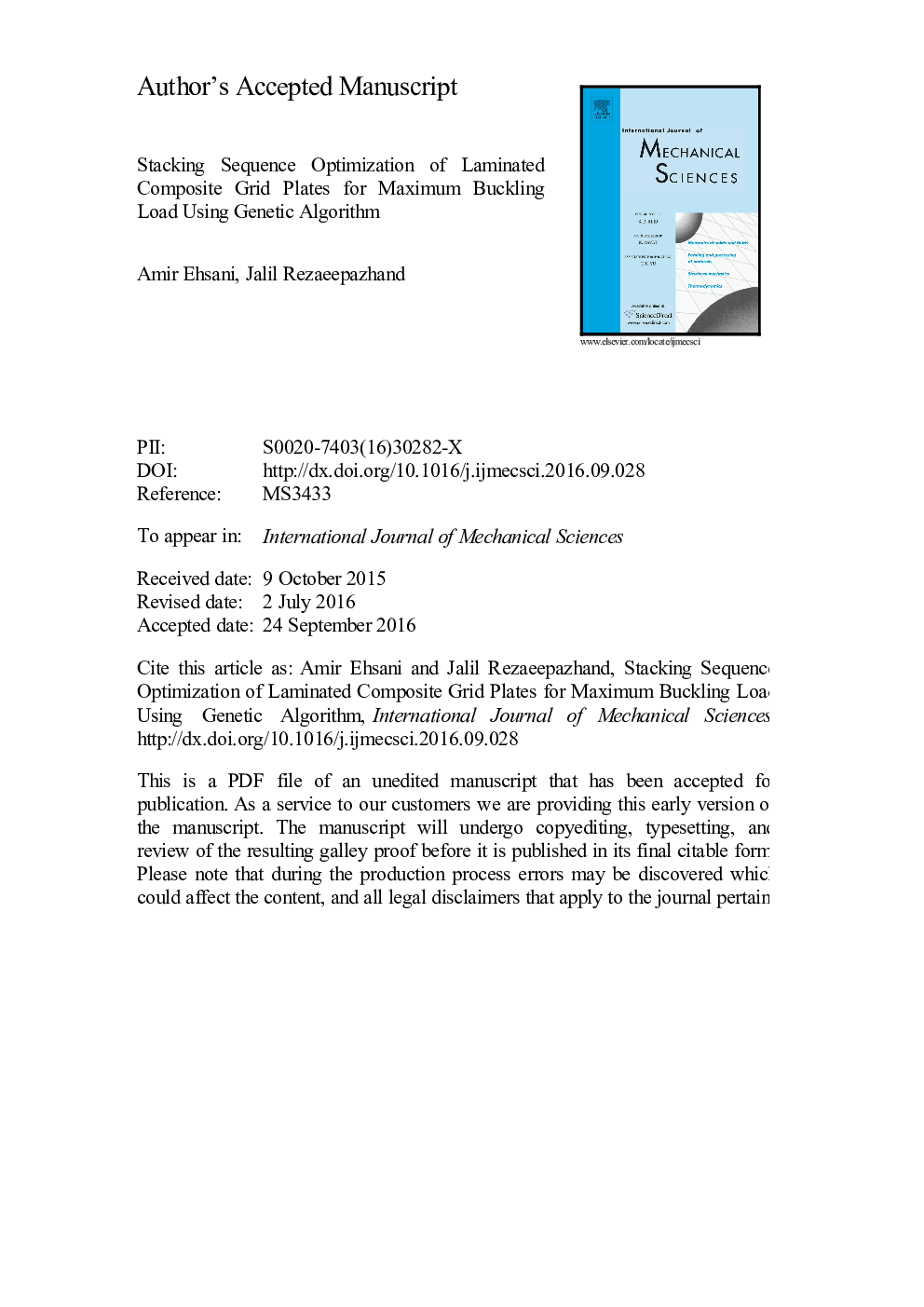| Article ID | Journal | Published Year | Pages | File Type |
|---|---|---|---|---|
| 5016350 | International Journal of Mechanical Sciences | 2016 | 19 Pages |
Abstract
Grid structures are extensively used in many engineering structures as an orthotropic layer with at most in-plane anisotropy. In this study, the laminated grids structures are considered. These structures are composed of various numbers of thin composite grid layers. This concept yields to numerous laminated grid configurations with disparate coupling effects, which can be used to tailor the stiffness, compare to conventional grids. In the present study, four known grid patterns with equal weight and thickness constitute the laminated grids. The genetic algorithm (GA) is employed to optimize the stacking sequence and pattern composition of the laminated grid. The buckling load is taken as a fitness function and the pattern and orientation of the grid layer are considered as the design variables. The first-order shear deformation and classical laminated plate theories are considered along with Ritz method to obtain the elastic buckling loads. The optimization results are presented for various boundary conditions and aspect ratios. The results show, using the laminated grid considerably improves the axial buckling load of the plates. Moreover, the plate boundary conditions and aspect ratios play an imperative role in the optimum pattern and stacking sequence of the laminated grid plates.
Related Topics
Physical Sciences and Engineering
Engineering
Mechanical Engineering
Authors
Amir Ehsani, Jalil Rezaeepazhand,
